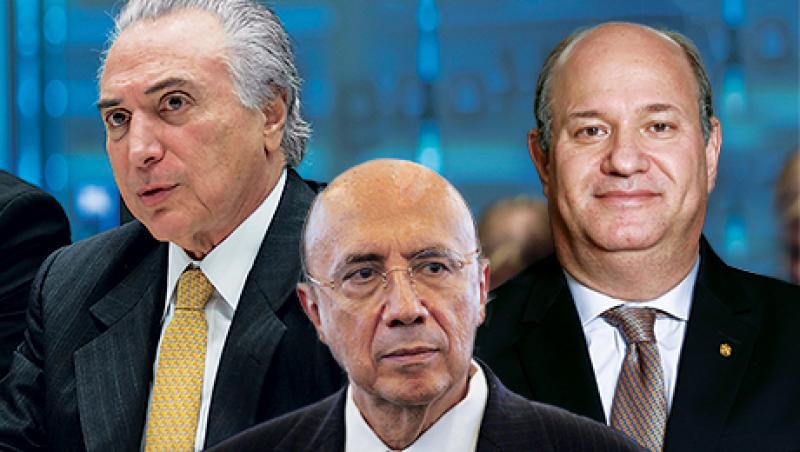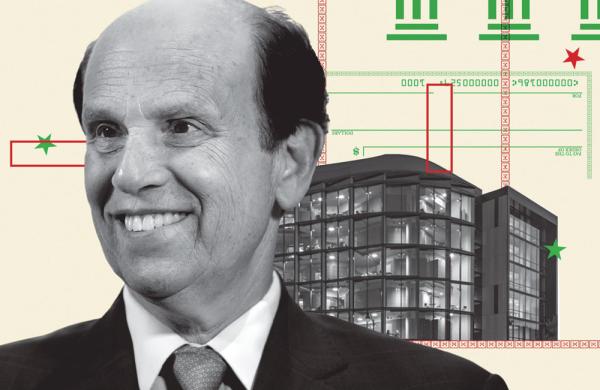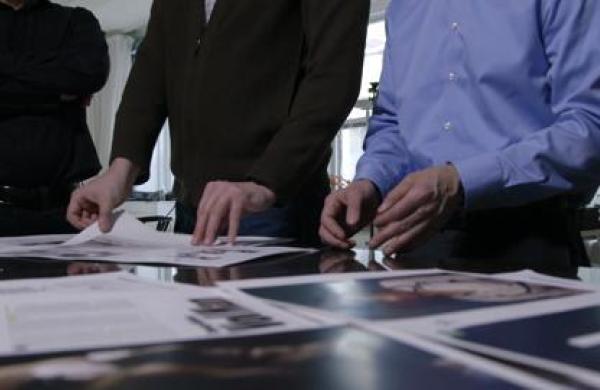Brazil, it turns out, still knows how to throw a party. Belying fears that the Zika virus, polluted waters and budget shortfalls would turn the Summer Olympics into hell on earth, as some protesters had warned, the games of Rio de Janeiro were a big success. Athletes from swimmer Michael Phelps to gymnast Simone Biles to distance runner Mo Farah turned in performances for the ages, and a party atmosphere prevailed from the famed Maracanã Stadium to the clubs of Leblon.
Many investors are hoping for a similar happy ending on the economic front. That would be welcome news for a country entering its third year of punishing recession and reeling from rampant corruption and political turmoil, which culminated August 31 with the impeachment and conviction of former president Dilma Rousseff for using illegal maneuvers to mask a gaping budget deficit. Her successor, President Michel Temer, has buoyed markets in recent months by appointing an economic team, led by Ilan Goldfajn at Banco Central do Brasil and former central banker Henrique Meirelles at the Finance Ministry, and outlining plans to rein in a runaway deficit and inflation rate. But in contrast to the Olympics, where low expectations set the stage for a positive surprise, the opposite risks being the case with the economy. The hopes that investors are pinning on Temer and his team may be overdone.
The centerpiece of Temer’s fiscal program is a proposed constitutional reform that would freeze spending in inflation-adjusted terms for as long as 20 years, and social security reforms to prevent a surge in retirement spending in coming years. The plan aims to put the federal budget, which is currently running a deficit of 10 percent of gross domestic product, on a gradual path to sustainability without wrenching short-term cuts that could aggravate the recession. But already the government is showing signs of giving in to pressure. In June the federal government agreed to give states 50 billion reais ($15.5 billion) in debt relief through 2018 to maintain public services. In return, Meirelles demanded that states agree to limit civil servants’ pay raises to the rate of inflation, but Congress rejected that provision in passing legislation for the debt relief last month.
“There’s still a lot of hope that they will bring down the deficit and implement reforms, but they have to turn that hope into reality,” says Alberto Ramos, chief Latin America economist at Goldman Sachs in New York. So far, the signs are worrying, he says. “Congress has not yet realized how serious the situation is,” he contends, and Temer and his team “are not willing to say no.”
Goldfajn, the former chief economist at Itaú Unibanco, has made a strong start as president of the central bank, overhauling its monetary policy committee, publishing more detailed minutes of the economic discussion at his first meeting, July 16 and 17, and making clear his determination to end rampant inflation. Price increases have slowed to a rate of 8.95 percent in August from 10.67 percent at the end of 2015, but Goldfajn made it clear he wants further progress on the disinflationary front — and some delivery on fiscal reforms — before the central bank starts cutting its policy rate, which stands at a sky-high 14.25 percent.
Policy credibility holds the key to turning Brazil’s vicious circle of big deficits, high inflation and recession into a virtuous circle of disinflation, sound public finances and growth, says Tiago Couto Berriel, a former economist at Rio de Janeiro equity and hedge fund manager Pacifico Gestão de Recursos whom Goldfajn recruited to the central bank as deputy governor and head of international affairs. “We have to make sure we do the job right, and not necessarily as fast as we can,” he tells Institutional Investor.
It would be unrealistic to expect a speedy turnaround given the depths of Brazil’s troubles. Since the economy went into recession in the second quarter of 2014, per capita output has fallen nearly 9 percent — a much steeper decline than any major economy faced during the 2008–’09 financial crisis — unemployment has nearly doubled, to 11.6 percent, and real wages are falling at a 3 percent rate. Not surprisingly, the festive atmosphere in Rio dissipated almost as soon as the Olympic flame was extinguished.
“Now that the tourists have left, you walk around and you see a lot of empty shops and restaurants,” says Monica de Bolle, senior fellow at the Peterson Institute for International Economics in Washington, who spent most of August in her native city of Rio. “I’ve never really seen anything like this.”
In the face of such widespread suffering, the government is trying to walk a careful line. It is promising to make structural changes that will attack the roots of the country’s fiscal problems, including the elimination of various constitutional provisions that mandate spending. At the same time it is taking a very slow, deliberate path to budgetary health: Its real spending freeze would last a minimum of a decade and potentially as long as 20 years. In effect, the government hopes to avoid the need for harsh austerity today by promising to be responsible well into the future.
“Brazil may show that it’s possible to trade off a ring-fenced, predictable, medium- to long-term path of fiscal adjustment for some flexibility in the short term,” says one senior official, who spoke on condition of anonymity.
This strategy is not without risk. The go-slow approach takes time, during which debt continues to build up and events could arise to knock the government off its consolidation path.
Before her suspension in May, Rousseff’s government had projected a primary budget deficit — that’s before interest payments — of 96 billion reais this year. On arriving at the Finance Ministry, Meirelles said the true number would be much worse: 170 billion reais. He proposes to reduce that gap to 139 billion reais, or 2 percent of GDP, in 2017. Then a revival of growth — many economists are predicting the economy will expand by about 1 percent in 2017 after contracting by a little more than 3 percent this year — should help tax receipts recover. Rising revenues combined with the government’s spending freeze will eventually turn the primary deficit into a surplus of 3 to 3.5 percent of GDP, Meirelles contends.
Goldman Sachs’ Ramos estimates it will take six to eight years to reach that budget target. “That’s too far away,” he says, adding that public debt will have risen to as much as 90 percent of GDP by that time, up from 68 percent currently.
The Temer government’s “speech and actions go in the right direction but the facts will take time,” says Allan Hadid, COO of global asset management at BTG Pactual in São Paulo. “This will be a long process.”
Will financial markets give Temer and Meirelles that much time? So far, they’ve been remarkably friendly. The country’s stock and bond markets and the real have risen sharply since January, when the political push for impeachment began raising hopes for a change in government and economic direction. In late August the benchmark Ibovespa stock index was up nearly 58 percent from its late January low, yields on ten-year government bonds had declined some 400 basis points, to just over 12 percent, and the real had climbed nearly 28 percent, to 3.26 to the dollar.
Sentiment toward Brazil has changed dramatically since the start of the year, but there are some notable differences, says Axel Christensen, chief investment strategist for Latin America and Iberia at BlackRock. Foreign investors have piled into Brazil, particularly the bond market, to take advantage of the country’s high yields now that the underlying economic and political environment appears to be making a turn for the better, he says, but domestic investors are more skeptical that the political system has truly changed, and want to see tangible progress on Temer’s fiscal and structural reform agenda.
“There is a big leap of faith in terms of how soon things can improve in the economy,” says Christensen. “I’m concerned that investors might lose their patience very fast.”
If investors lose faith and interest rates climb again, Brazil’s debt could explode, triggering a crisis. Goldfajn’s conservative approach at the central bank indicates he’s well aware of that danger and determined to avoid it. Temer has promised to enshrine the central bank’s decision-making autonomy with a constitutional amendment. That’s good news for investors, who felt the Rousseff government held too much sway over Goldfajn’s predecessor, Alexandre Antonio Tombini.
Goldfajn has ramped up the market savvy of the central bank’s Monetary Policy Committee. In addition to recruiting Berriel, he tapped Reinaldo Le Grazie, former CEO of Bradesco Asset Management, as deputy governor for monetary policy, and hired Carlos Viana de Carvalho, a former partner at Rio hedge fund firm Kyros Investimentos who did a four-year stint as an economist at the Federal Reserve Bank of New York, as deputy governor for economic policy.
Berriel explains the thinking of the new team. “When bringing inflation down, you need to be conservative in your assessment of risks,” he says. “You’re recovering credibility.”
The committee, he says, wants to make sure inflation is headed back to the target; its market-based scenario predicts it will decline to 5.1 percent next year. The members also want to ensure Temer and Meirelles deliver their part of the bargain. Berriel says he is optimistic on that score, but adds, “We don’t want to condition policy statements on some reforms that are not really implemented.”
Many investors believe Temer and Meirelles had been soft-pedaling reforms so as not to jeopardize the Senate vote to convict Rousseff, and they look for them to step up the pace now that she has been removed. “The government can be a bit more confrontational,” says BlackRock’s Christensen.
They had better be. The window for serious fiscal and structural reforms is likely to be short. By this time next year, the political class will be gearing up for the congressional and presidential elections of October 2018. Meanwhile, Temer’s political capital is limited. His unpopularity was underscored at the Olympic Games opening ceremony when the crowd booed him lustily.
While the government has set out a detailed fiscal strategy, many of its planned reforms remain largely aspirational. That’s the case with social security. The state retirement system currently costs about 10 percent of GDP, and that will rise quickly without reform. Benefits are indexed to wages, helping to fuel inflation, while rules are so lax that the average retirement age is in the mid-50s.
“This would really be the time to have a serious discussion about what the country can pay for in the medium to long term,” says the Peterson Institute’s de Bolle. “The problem is the discussion is taking place in a political climate that’s extremely charged. It’s very difficult to see how a reform as important as this one can go forward.”
For Temer and Meirelles, the hard work is only just beginning. •
Follow Tom Buerkle on Twitter at @tombuerkle.






